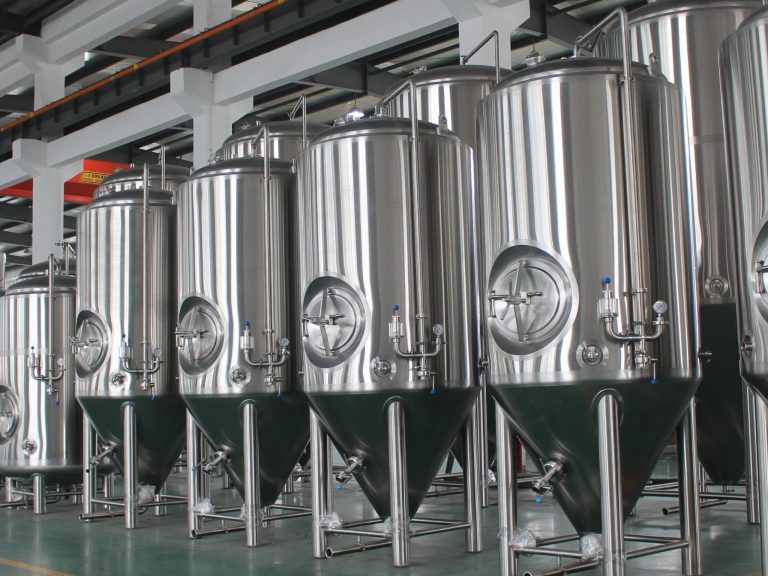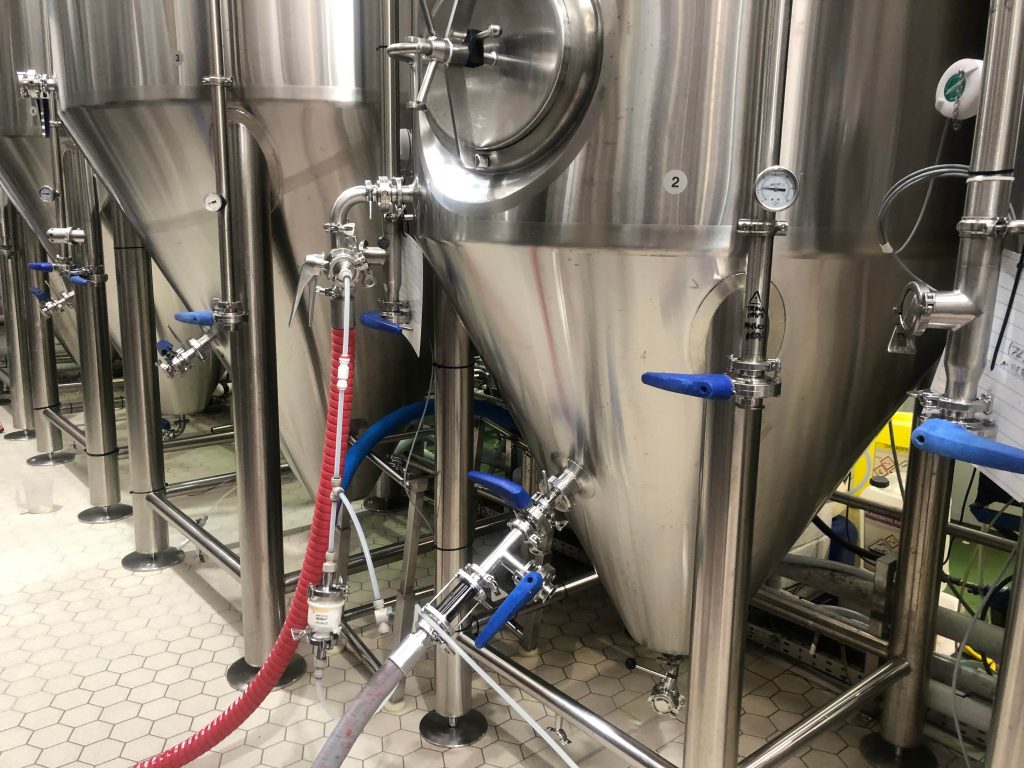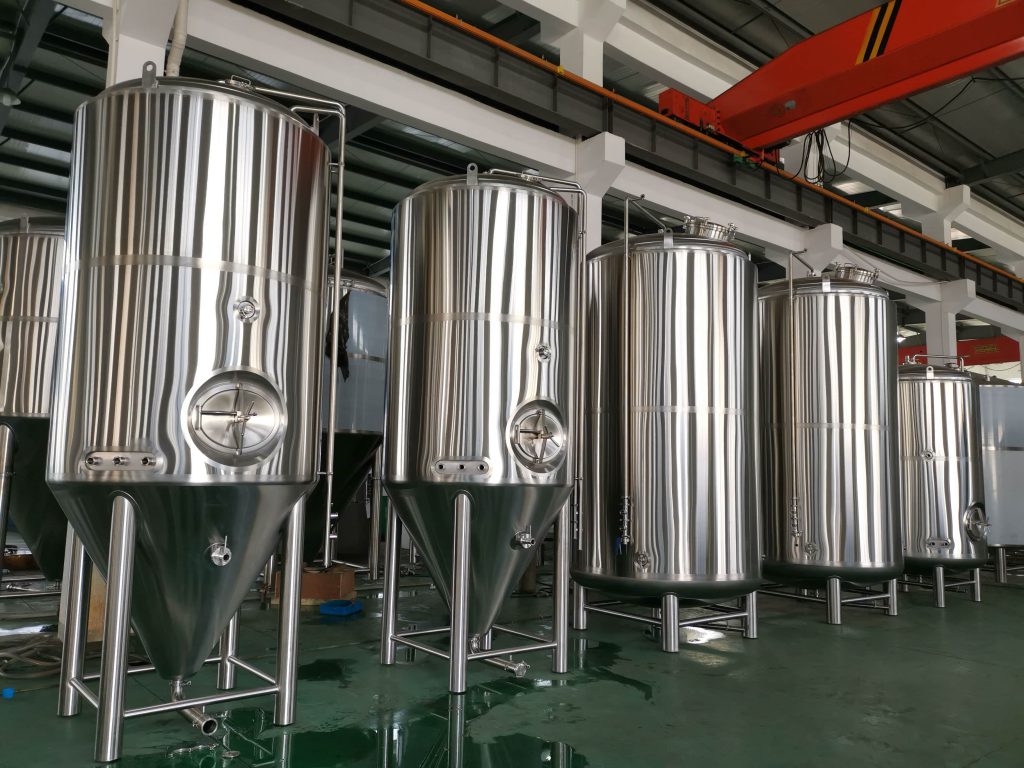Введение

Brewery fermentation tanks are essential components in the beer-making process, influencing various aspects of beer quality, from flavor profiles to production efficiency. These tanks are not just containers but critical tools that brewers use to control fermentation conditions, manage yeast activity, and ensure the overall quality and consistency of their beer products. Understanding the different types of fermentation tanks and their respective advantages is crucial for breweries aiming to produce exceptional beer consistently.
Виды Brewery Fermentation Tanks
There are several types of fermentation tanks used in breweries, each with unique characteristics that significantly impact beer quality.
Open Fermentation Tanks
Open fermentation tanks are traditionally used for brewing certain styles like Belgian ales, lambics, and other wild or mixed fermentation beers. These tanks are typically shallow and wide, allowing the beer to be exposed to the environment. This exposure facilitates the introduction of ambient yeast and bacteria, which play a crucial role in the fermentation process. The open design also allows for the formation of characteristic flavors and aromas, contributing to the unique profiles of these beer styles.
Closed Conical Tanks
Closed conical tanks are the standard in many modern breweries due to their efficiency and ability to maintain precise fermentation conditions. These tanks are cylindroconical in shape, with a closed top and a conical bottom. The closed design helps prevent contamination from external sources, ensuring that the beer remains free from unwanted microorganisms during fermentation. Temperature control is easier with closed conical tanks, as they often come equipped with cooling jackets or integrated temperature control systems. This precise control over fermentation temperatures is crucial for yeast health, fermentation kinetics, and the development of desired flavor profiles.
Юнитанки
Unitanks are versatile vessels that serve both as fermenters and maturation tanks. They are designed to handle both primary fermentation and secondary processes such as conditioning and carbonation. Unitanks are often equipped with pressure-rated capabilities, allowing brewers to carbonate beer directly in the same vessel. This capability is particularly beneficial for breweries producing carbonated beers like lagers and ales, as it simplifies the production process and helps maintain consistent carbonation levels. The flexibility of unitanks also allows brewers to experiment with different fermentation and conditioning techniques without needing separate vessels.
Как Brewery Fermentation Tanks Influence Beer Quality
The quality of beer is profoundly influenced by the design and management of fermentation tanks. Several key factors contribute to this influence:
- Контроль температуры: Maintaining optimal fermentation temperatures is critical for yeast activity and the production of specific flavor compounds. Different beer styles require different temperature profiles, and fermentation tanks with precise temperature control mechanisms (such as cooling jackets or glycol systems) ensure that these conditions are met consistently.
- Sanitary Conditions: Cleanliness and sanitation are paramount in brewery operations to prevent contamination. Closed fermentation tanks help minimize the risk of airborne contaminants and microbial infections, preserving the integrity of the beer and ensuring it meets quality standards.
- Управление дрожжами: Proper yeast management practices, including pitching rates, nutrient additions, and oxygenation levels, are essential for achieving desired fermentation kinetics and flavor development. Fermentation tanks that facilitate effective yeast management contribute to the production of beers with well-defined flavors and aromas.
- Carbonation Levels: Controlling carbonation levels is crucial for achieving the desired mouthfeel and overall sensory experience of the beer. Unitanks, with their pressure-rated capabilities, allow brewers to carbonate beer naturally or through forced carbonation methods, ensuring consistent carbonation levels across batches.
- Воздействие кислорода: Minimizing oxygen exposure during fermentation and maturation stages is critical for preserving beer freshness and stability. Closed fermentation tanks with sealed lids and minimal headspace reduce the risk of oxidation, which can otherwise lead to off-flavors and shortened shelf life.
Сравнение Brewery Fermentation Tanks Cooling Methods

This table compares various cooling methods used in brewery fermentation tanks, outlining their descriptions and typical applications based on brewery size, space availability, and budget considerations.
| Метод охлаждения | Описание | Приложения |
|---|---|---|
| Glycol Jackets | Cooling jackets around the tank filled with glycol, which absorbs heat from the fermenting beer | Ideal for precise temperature control in large-scale breweries |
| Direct Refrigeration | Refrigeration coils directly immersed in the fermenting beer, cooling it from within | Suitable for small to medium-sized breweries with space limitations |
| Ice Bank | Tanks equipped with an ice bank or a cold water reservoir that circulates around the tank | Common in breweries with limited access to glycol or refrigeration |
| Ambient Air Cooling | Tanks exposed to ambient air through a cooling jacket or panel system | Used in small craft breweries where space and budget are limited |
| Fermentation Chambers | Insulated fermentation chambers with controlled temperature settings | Ideal for experimental batches and precise temperature control |
Заключение
Brewery fermentation tanks are pivotal in shaping the characteristics and quality of beer. Whether a brewery opts for open, closed conical, or unitank systems, the choice profoundly impacts fermentation dynamics, flavor development, and overall beer quality. By understanding how different types of fermentation tanks influence these factors, breweries can optimize their processes to consistently produce exceptional beers that satisfy consumer preferences and expectations.
Часто задаваемые вопросы
Q: What are the benefits of using closed conical бродильные резервуары?
A: Closed conical tanks offer precise temperature control, reduced contamination risk, and ease of cleaning and sanitation due to their closed design. These features contribute to consistent fermentation outcomes and high-quality beer production.
Q: How do open бродильные резервуары influence beer flavor?
A: Open fermentation tanks expose beer to ambient yeast and bacteria, resulting in unique flavors and aromas that are characteristic of certain beer styles like Belgian ales and lambics. This method allows for the development of complex flavor profiles not achievable with closed fermentation systems.
Q: Why is yeast management important in brewery fermentation?
A: Proper yeast management practices, including adequate pitching rates, nutrient supplementation, and oxygenation levels, are critical for achieving desired fermentation kinetics and flavor development. Effective yeast management ensures that beers exhibit consistent quality and flavor characteristics batch after batch.

